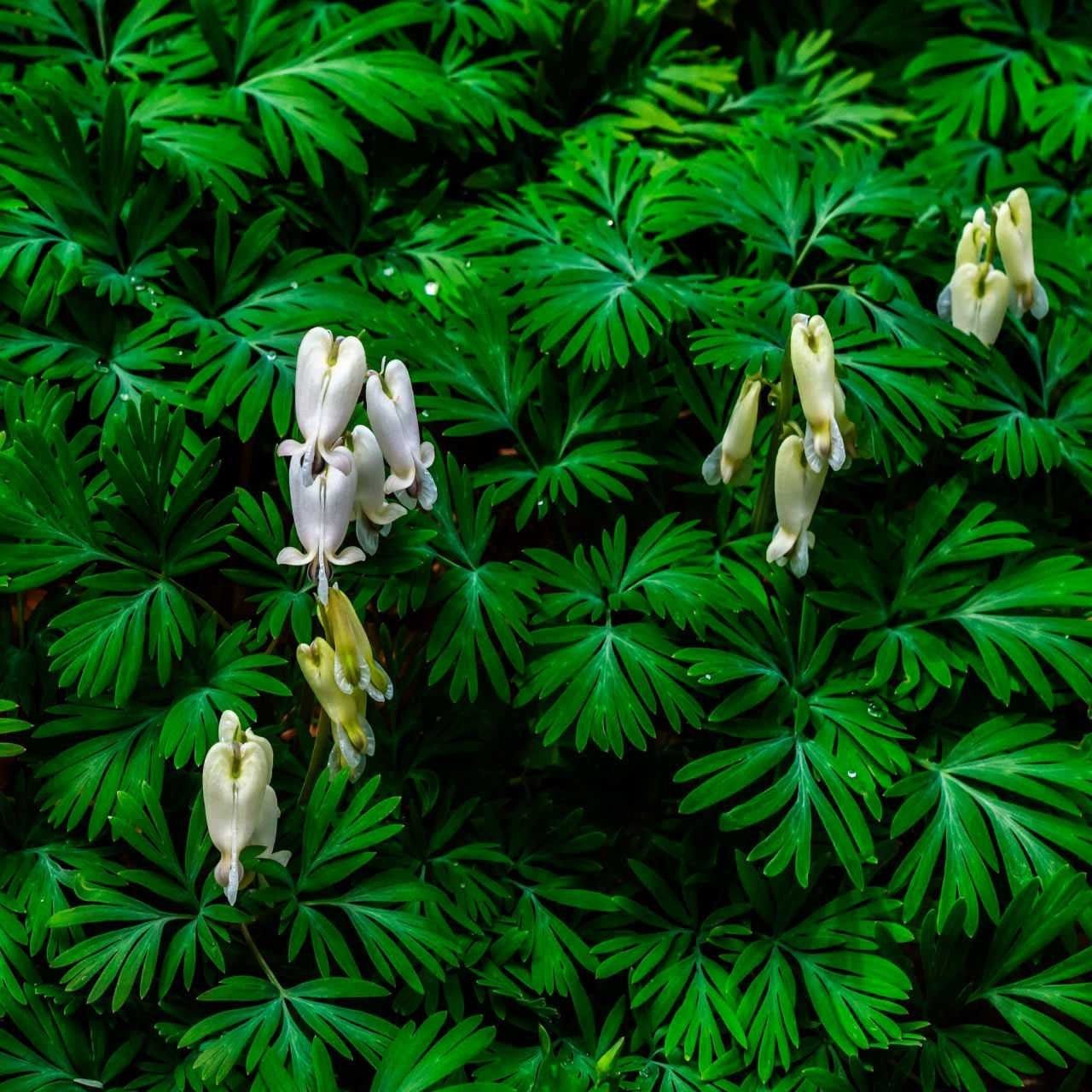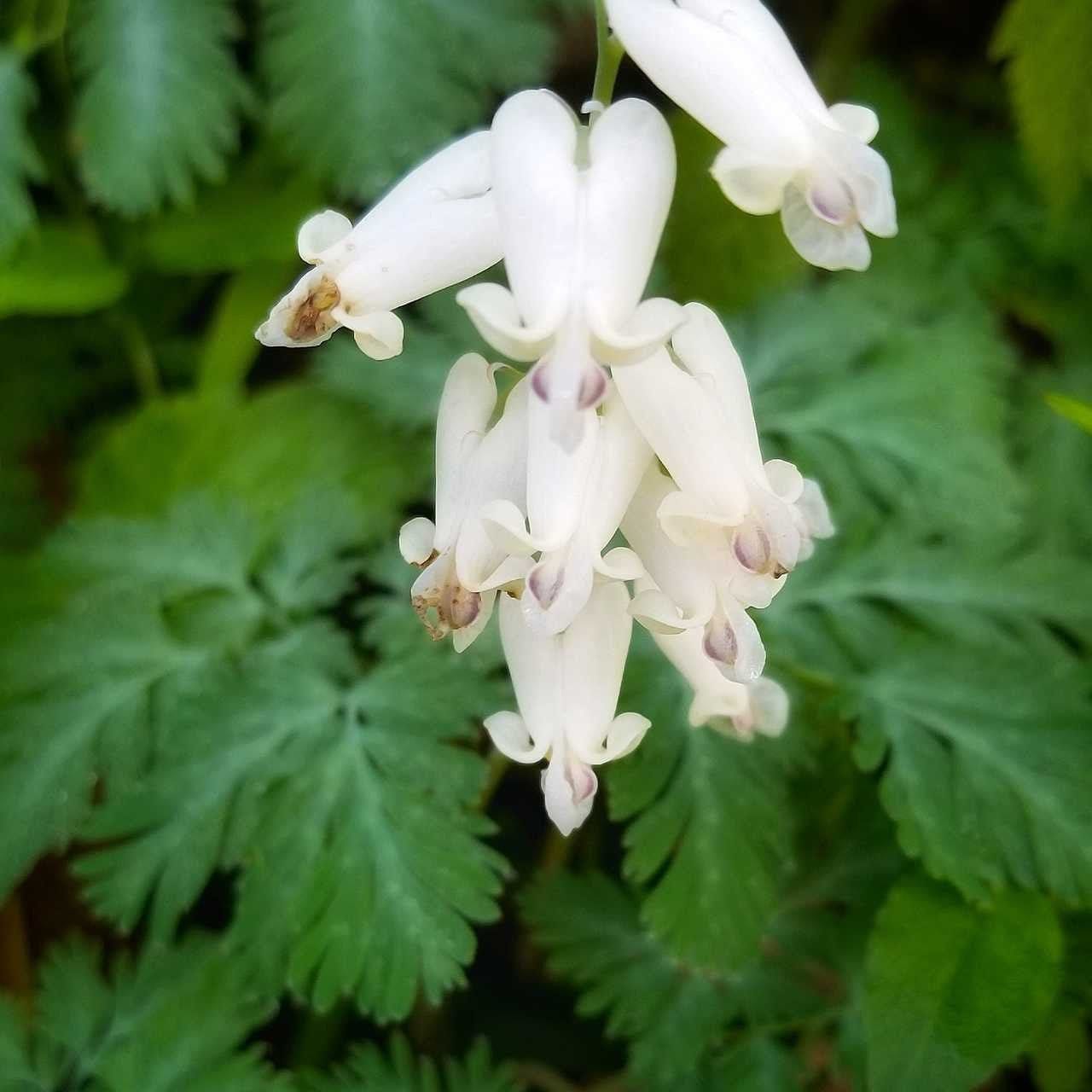Squirrel Corn
Squirrel Corn
| Order | Percentage Discount | ||
|---|---|---|---|
| 2-5 | 25% Off | ||
| 6-10 | 30% Off | ||
| 11-25 | 35% Off | ||
| 26-50 | 45% Off | ||
| 51+ | 65% Off | ||
Couldn't load pickup availability
5-7 Days
Under 12"
Sun or Shade
4-8
Flowering
Bare-root
Squirrel Corn
Squirrel corn (Dicentra canadensis) is a perennial wildflower in the poppy family. It is native to North America and known for its beautiful, heart-shaped, pink, and white flowers that bloom in the spring. This plant is commonly found in woodland areas and is often mistaken for its close relative, Dutchman's breeches (Dicentra cucullaria).
Squirrel Corn's Characteristics
It grows to 10-12 inches in height and spreads through underground rhizomes. The plant has blue-green, fern-like leaves that grow up to 6 inches long. The flowers bloom in clusters on arching stems that can grow up to 18 inches in length. The flowers are pinkish-white and shaped like tiny hearts, with a yellow-tipped spur at the back.
Habitat
It Prefers Moist, Rich Soil and Partial to Full Shade
It is commonly found in deciduous forests, stream banks, and damp meadows. The plant is often associated with other wildflowers, such as trilliums, violets, and ferns.
Planting
It can be propagated through seeds or by dividing its rhizomes. The best time to plant squirrel corn seeds is in the fall, as they require a period of cold stratification to germinate. The rhizomes can be divided between the fall and early spring, and each division should have at least one bud.
Benefits
Its scientific name is Dicentra canadensis. The article delves into how to grow this plant and its importance. Its Benefits This plant is very good at repelling and killing off pesky insects and weeds, making it helpful in controlling rogue plants that can destroy your garden. In addition, the flowers are edible, but the leaves are bitter.
Moreover, according to research, the plant has antioxidants that fight against damaging factors and prevent damage throughout the body. It will also help improve digestion, enhance memory, and lower blood pressure. The plant is very useful in making tea rich in antioxidants.
This plant is a slow grower, but it feeds off the sunlight and the nutrients in the soil. It only needs a little watering since this is done during rainfall.
When handling Squirrel Corn, you must be aware of the spiny parts on the leaves. Make sure to wear a pair of gloves when moving this around so you do not get hurt. You need to root it from seeds or pot up your leaves to grow them into plants to propagate this plant.
The soil should be acidic and rich in potash. Just add peat moss to the soil. It would be best to pinch off dead leaves as they fell off so your plant could develop better and produce more flowers. When harvest time comes, separate the seeds from their pods.
Conclusion It does well in the woods and other trees, so if you are looking for a plant that looks like a corn plant, you should try this one out.
This Is How Your Plants Will Look upon Delivery
Bloom/Foliage Color
White
Shipping date depends on the date displayed and chosen when you order from the product's page.
We only accept returns on plants verified dead. If you think your plants have died, we offer a 1 year warranty, please use use this File a Claim Link to verify dead plants and start with return warranty process.



Great location for all of your plant needs! Wonderful website.
We always enjoy hearing what our customers have to say, Austin! We’re glad we could be of service and appreciate the kind words! Please see us again if there is anything else you need!
my cedar tree is doing great. wanted to let you know.
Thanks for the 5-star review, Gloria. You made our day! We look forward to making your day again real soon.






